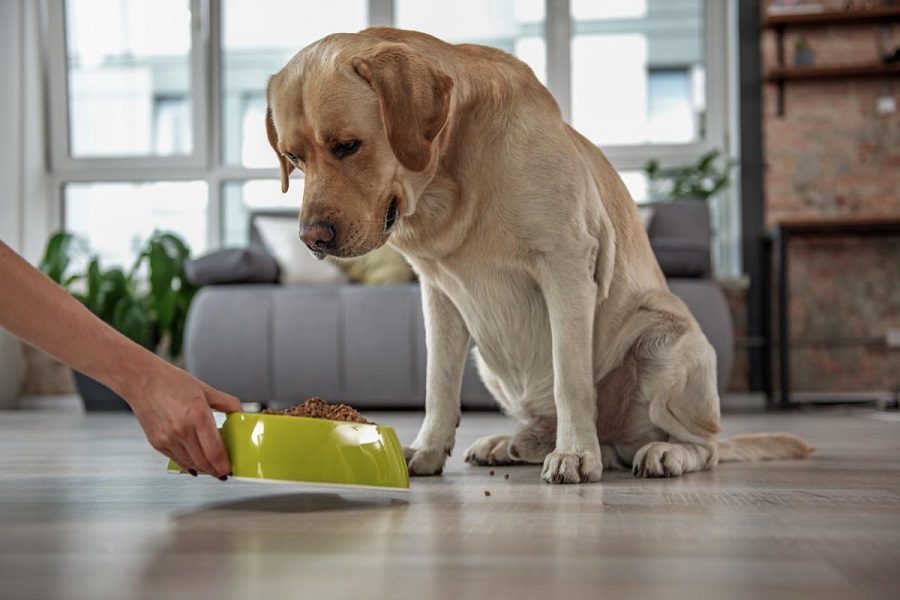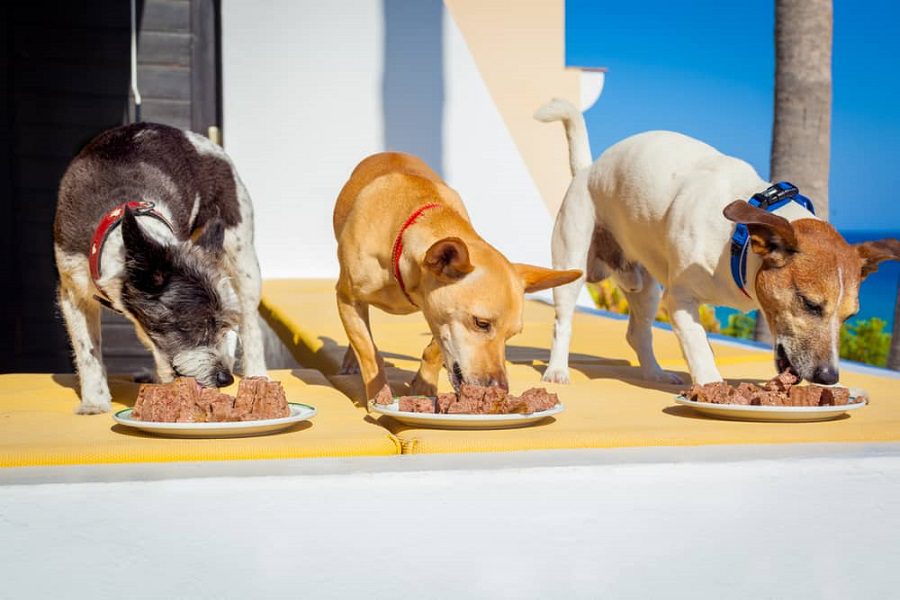Last Updated: 2 years ago
Dogs are hit-and-miss drinker.
Sometimes they don’t drink much at all and other times they seem to drink a ton. As a pet owner, it’s normal to worry when you start to see a change from their typical behavior.
Here are the warning signs to look for if you’re concerned it’s a more serious issue.
How Much Water is Too Much Water?
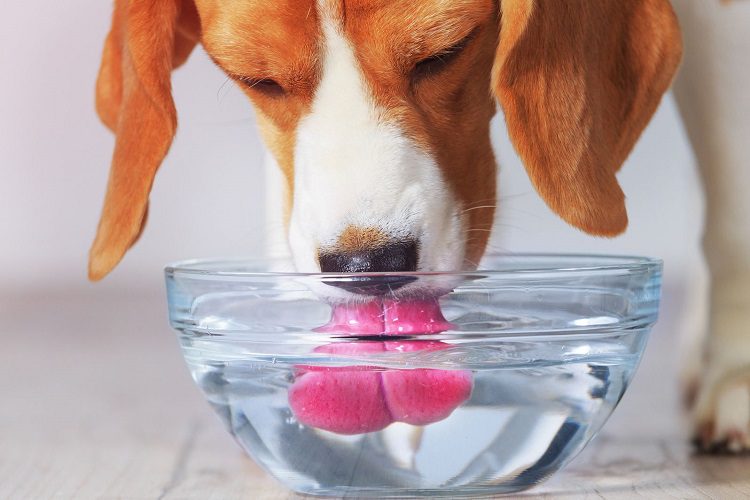
According to webMD for pets, dogs need to drink around an ounce of water per day per pound they weigh. For example, a five pound dog would need to drink about five ounces a day. There are other pooches that need more than this though:
- Puppies
- Lactating dogs
There are a number of factors that can lead to excessive thirst in dogs, including hot weather, higher than normal activity level, and your dog’s diet. If a dog is drinking excessively it may be cause for concern.
The Science Behind Excessive Thirst in Dogs
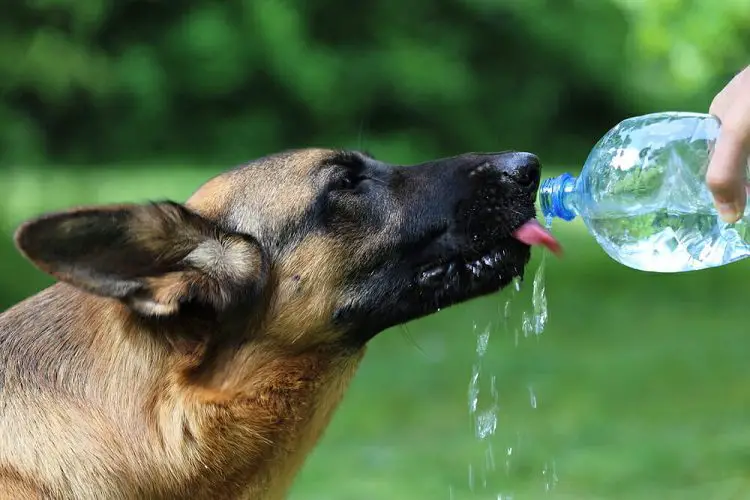
There are two medical terms that vets use when discussing these issues:
- Polydipsia. This is the medical term for increased thirst in dogs.
- Polyuria. This is the medical term for excessive urinating in dogs.
Serious medical consequences of these issues is rare but it’s important to have your dog evaluated to make sure they’re not caused by serious medical conditions. The two main serious issues your vet will want to rule out will be:
- Renal failure.
- Hepatic diseases.
The Most Common Reasons for Excessive Thirst in Dogs
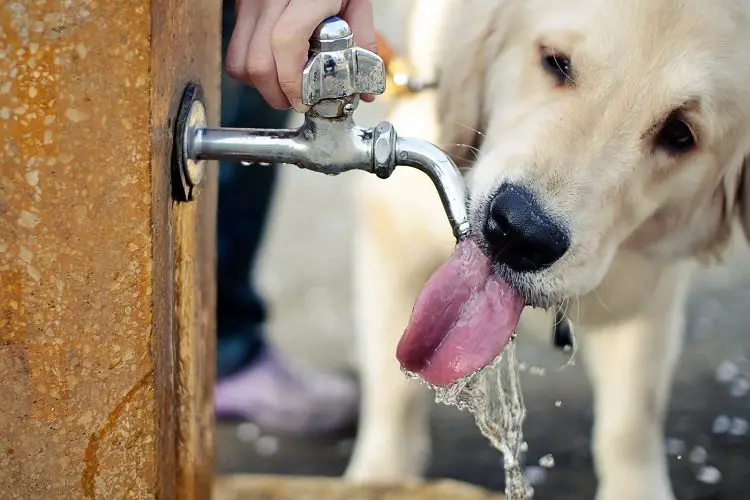
Let’s take a look at some of the most common reasons a dog may be excessively thirsty.
Dehydration
Dehydration can be caused by a number of things:
- Hot days
- Excessive playing
- Extra exercise
- Illness
- Infection
Other signs that your dog may be dehydrated include:
- Tiredness
- Dry gums
- Dry tongue
- Thick saliva
Dehydration can go from a minor inconvenience to a life-threating situation very quickly. If you’re worried that your dog is dehydrated then you should visit the vet immediately.
On the other hand, if your dog is just thirsty – but isn’t vomiting – you can give them a little bit of water at a time every ten minutes for a few hours. Stick to one teaspoon for a little dog and up to two tablespoons for larger breeds.
If you give your dehydrated dog access to unlimited water when they’re dehydrated, they could become sick and start vomiting.
Illness
There are numerous illnesses that can lead to excessive thirst in dogs including:
- Liver disease
- Cushing’s disease
- Cancer
- Kidney disease
- Diabetes
- Pancreatitis
- Diarrhea
- Fever
- Infection
In some cases, it’s not actually the disease causing the thirst but the medication your dog takes to treat said medication. Speak with your vet to find out if excessive thirst is a side effect. If it is, your vet may need to lower the dosage.
Medications
Medications can result in excessive thirst. Some of the most common culprits are:
- Anti-inflammatory drugs. This includes prednisone, which is used to treat a wide variety of conditions in dogs like allergies, inflammatory bowel disease, and asthma.
- Heart failure drugs. This includes furosemide, which can lead to excessive urination – which leads to excessive thirst in dogs.
- Seizure medications. This includes phenobarbital, which has side effects including excessive thirst, excessive urination, and excessive appetite.
Food
Dry dog food has only 5 – 10% water, which can result in excessive thirst in your dog. If your dog is eating high sodium foods then they may also need to drink more.
Remember that high-salt foods can actually kill your dog – so don’t share people food with them. Signs they’ve eaten too much salt include:
- Tremors
- Depression
- Vomiting
- Diarrhea
Diagnosing Your Dog
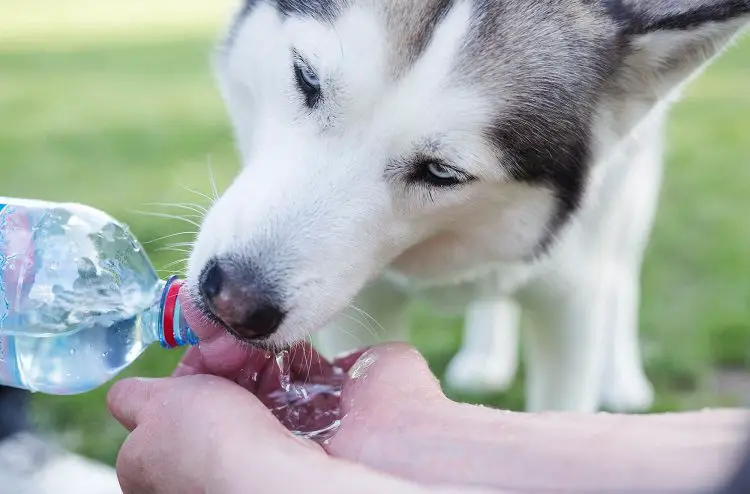
Your vet will have a variety of ways to check your dog’s health but there are a few common steps they’ll likely take.
- A complete medical history and physical examination. This will including touching the abdomen to look for swelling in the kidney and liver, checking females for vaginal discharge, and checking the size of the thyroid gland.
- A medical history. Your vet will want to check the history of various drugs your dog may have taken, they’ll want to know if the dog is sexually intact or has been fixed, how often there are urinary accidents in your home, if the urine has had a strong color or smell, if your pooch has lost weight, had a change in their appetite, or experienced any other strange behaviors.
Based on the vet’s findings from these steps they’ll move forward with additional, specific testing.
Treatment for Excessive Thirst in Dogs
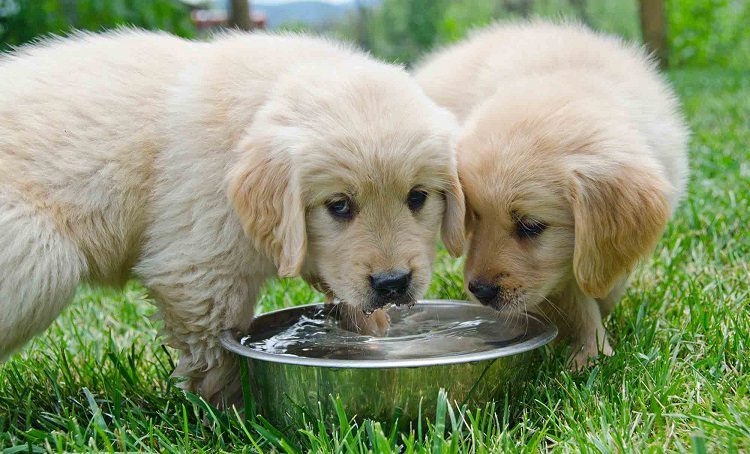
As with any medical condition, the best way to treat excessive thirst in dogs depends on the reason they’re experiencing this issue in the first place.
If it’s underlying disease like diabetes then the diabetes will be treated. If it’s caused by their food then the vet may recommend a change to their diet.
If it seems to be a temporary problem caused by extra exercise or excessive heat then you don’t necessarily need to take your dog to the vet. Keep an eye on the issue and if it persists then you should visit your vet right away.
How To Keep an Eye on Your Dog’s Water Consumption
The easiest way to keep track of any changes in the thirst of your dog and their drinking behavior is to have a routine. A general guide would look like this:
- Refill your pooch’s water bowl at about the same time every day.
- Fill the bowl with about the same amount of water every day.
- Note how much you put in every day.
- Note how much water is left when you refill it.
It’s important to keep in mind that water is essential to your pooch’s health. As a result, you don’t want to deprive your dog of water.
If you have reason to worry that your dog is either drinking too much water or not enough, then it’s time to contact your vet.

